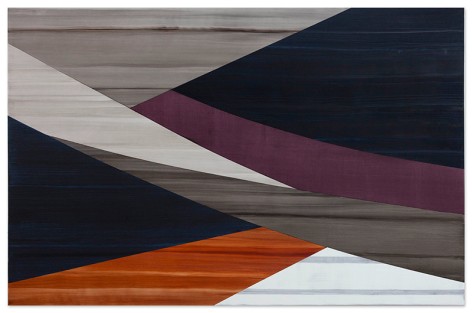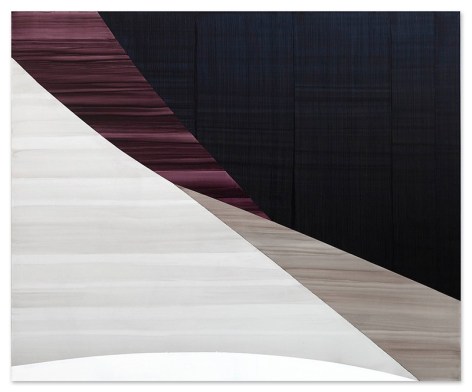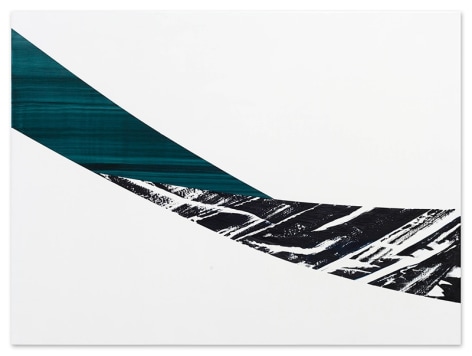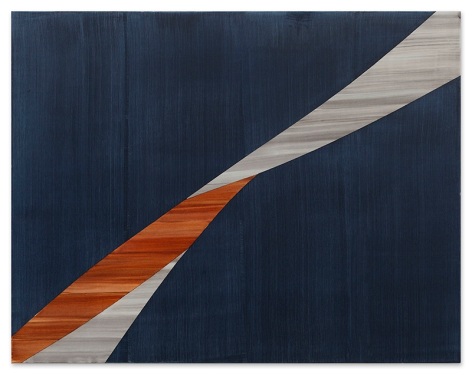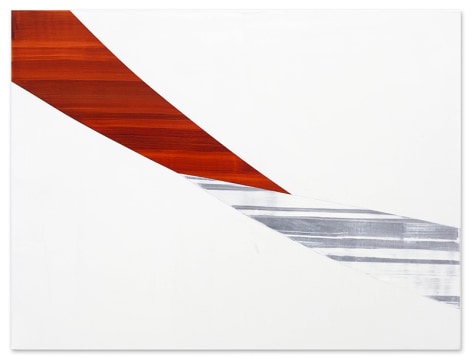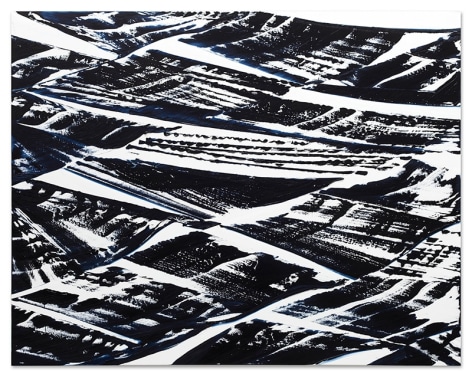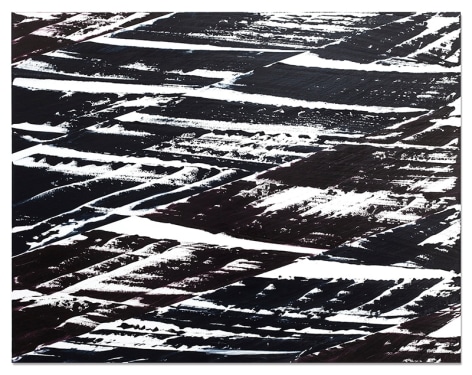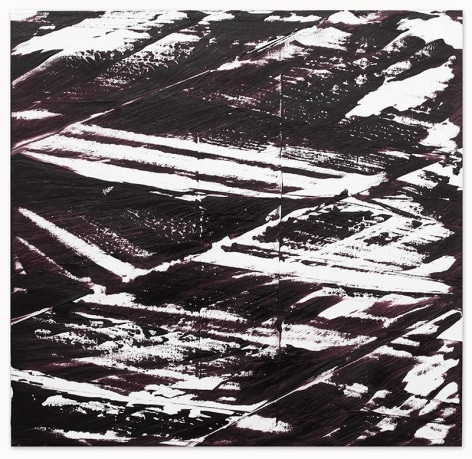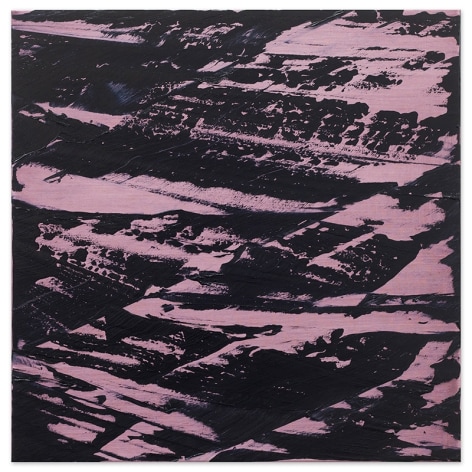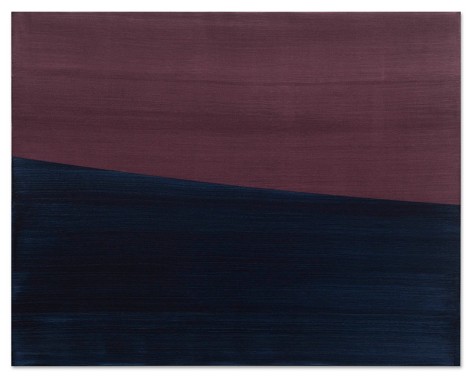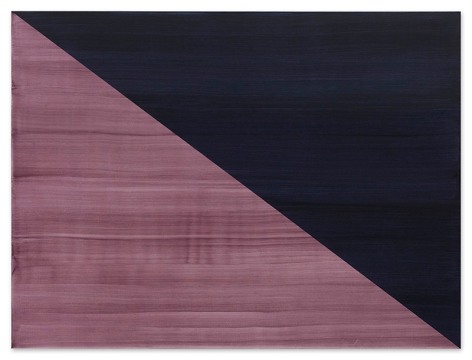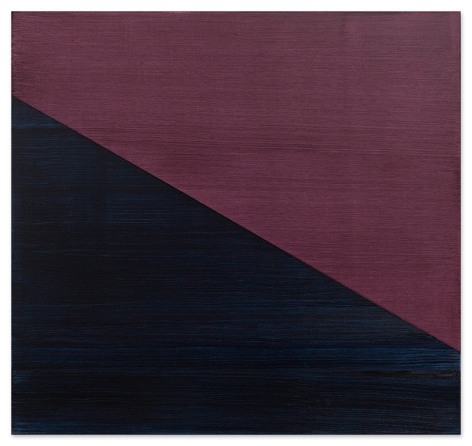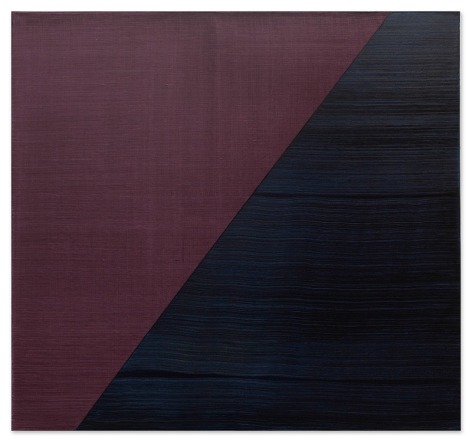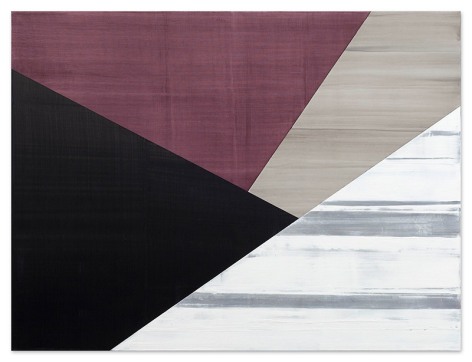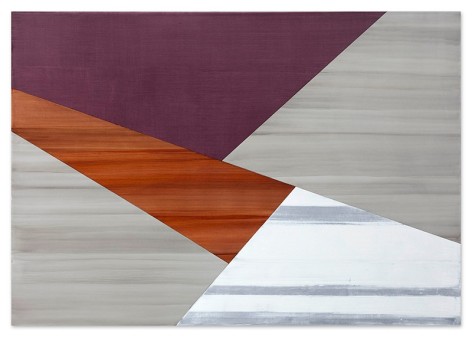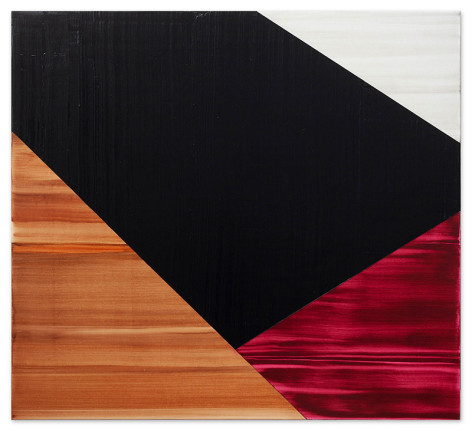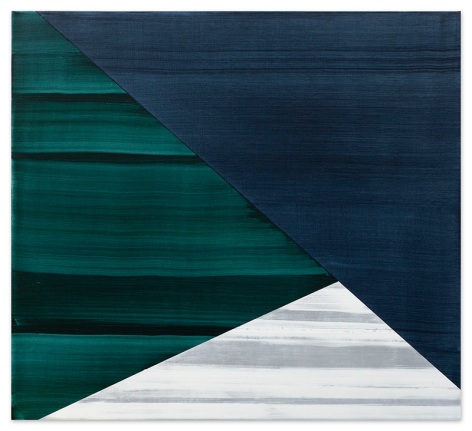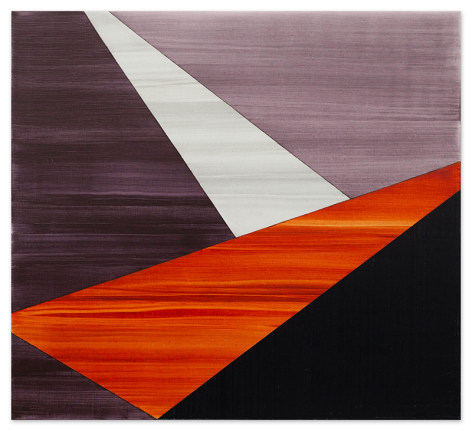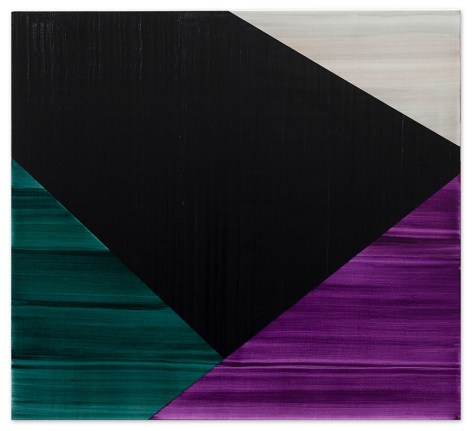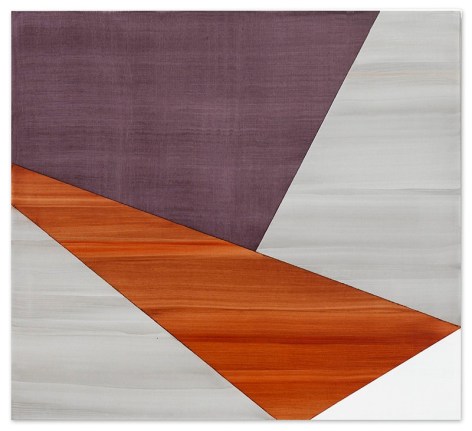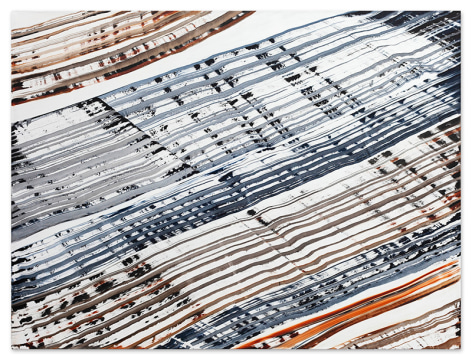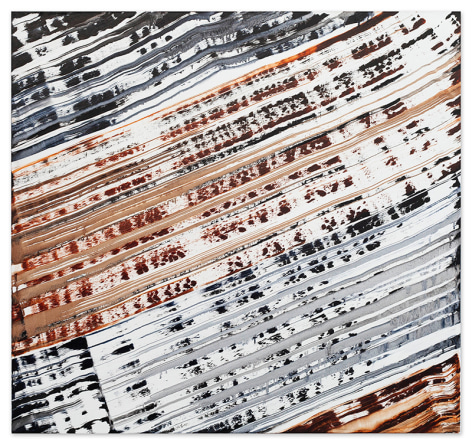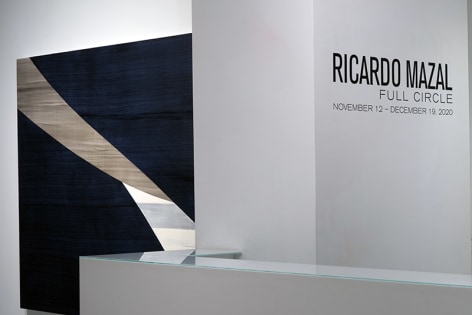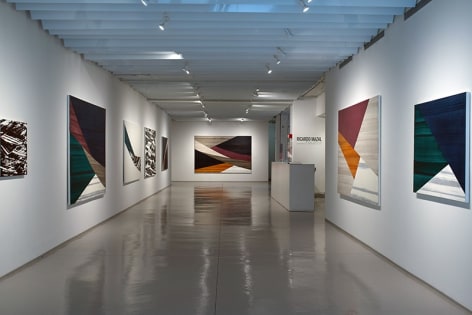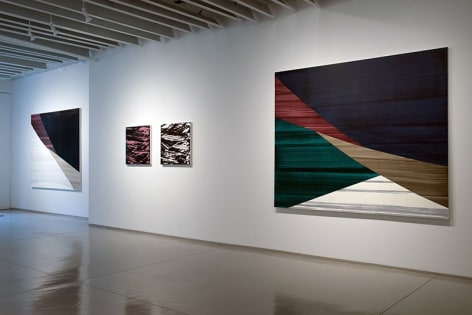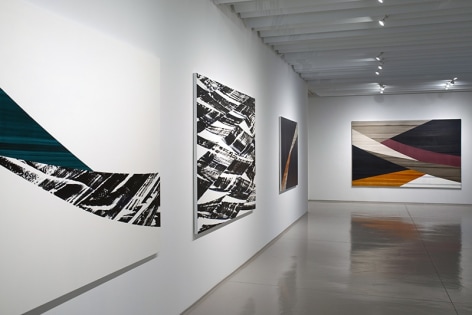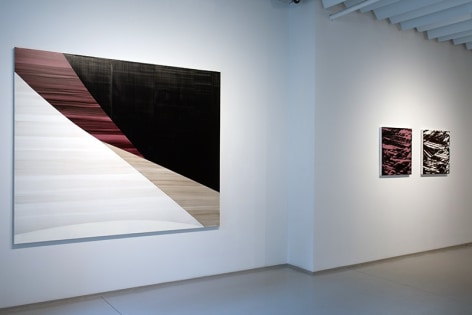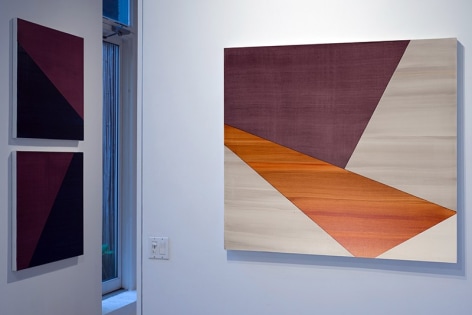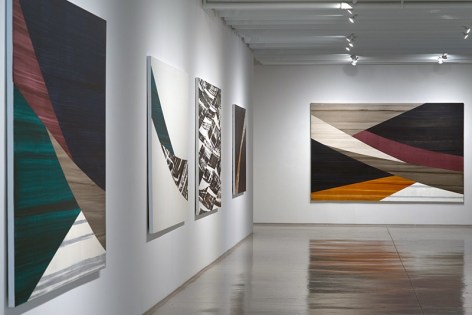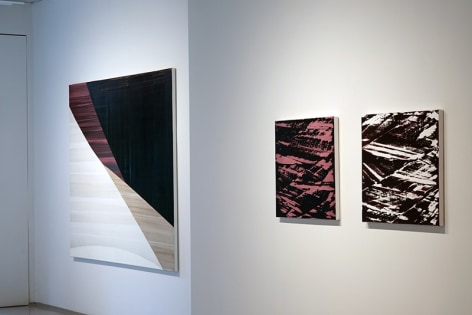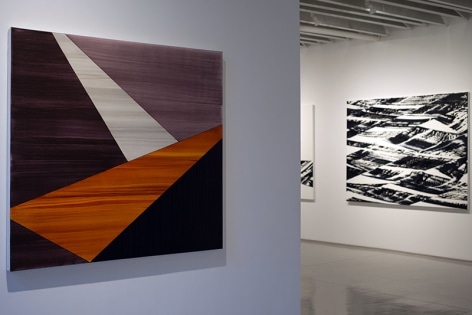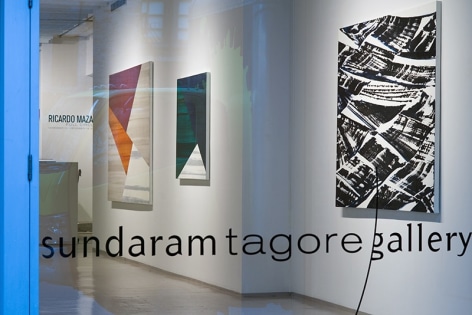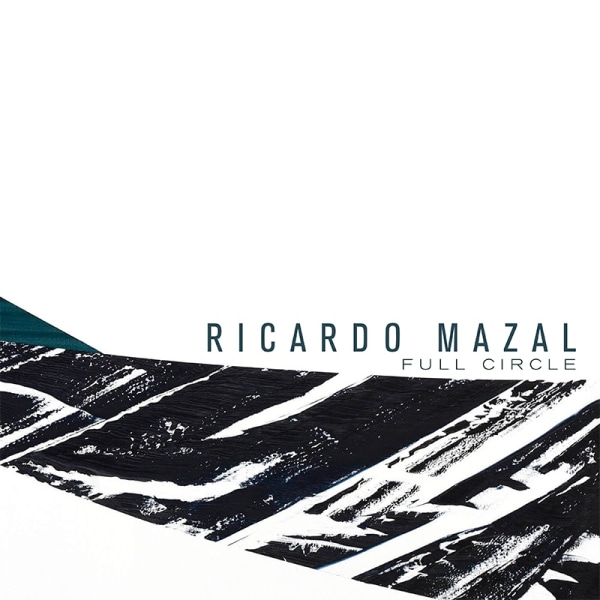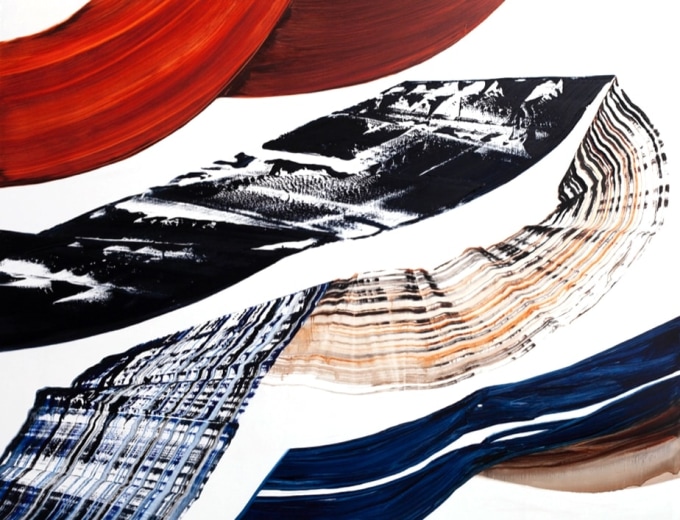
Sundaram Tagore is pleased to present an exhibition of richly colorful abstract paintings by acclaimed Mexican artist Ricardo Mazal. Created during the recent closures, this new body of work draws from all his most powerful series of the last twenty years. Mazal skillfully brings the past into the present by taking techniques and elements from earlier works in brand new directions and transforming them in contemporary ways.
When the lockdown went into effect last spring, Mazal had just opened a major solo exhibition at the Centro Cultural Estación Indianilla in Mexico City. Mazal and his wife Fabi, who were there for the opening, had to cut their trip short and return home to New Mexico, where they joined their two daughters.
With one daughter just returned from studying abroad and the other soon to leave for university in Berlin, Mazal was thrilled for the uninterrupted time with his family. He felt little motivation to get back into the studio. With all the uncertainty stemming from the pandemic, coupled with the abrupt closing of his new show, he didn’t have the energy or the inclination to stretch canvases, let alone embark on a new body of work.
To overcome his apprehension, Mazal invited his oldest daughter Julia to assist him in the studio. They began by filming a series of videos chronicling his painting practice starting with his preparatory phase, where he covers the walls of his soaring, sun-drenched studio with a new coat of crisp white paint. It’s a cathartic act that allows him to mentally shed the previous series and clear his mind for the new one. Julia interviewed him during the next phase, as he began to compose digital renderings of the compositions that ultimately serve as a blueprint for the paintings.
Traditionally, Mazal uses his own photography to create the renderings, as his work is almost always rooted to a specific place, event or experience. In the early 2000s, he embarked on a decade-long examination of sacred burial rituals that took him from the tomb of the Red Queen in Palenque, Chiapas, Mexico, to the Peace Forest cemetery in Odenwald, Germany, and finally, Mount Kailash, Tibet’s holiest summit. The billowing prayer flags of Bhutan inspired his next series and more recently, the Old Jewish Cemetery of Prague, all of which he documented in photographs.
With travel now off the table, Mazal lacked the benefit of his customary creative source. Recognizing he needed to adjust his approach, he traveled inward for inspiration. Tapping into his early years as a graphic designer, Mazal generated hundreds of abstract arrangements, exploring color, shape and perspective.
He began to play with linear elements, bending and twisting them, as if they were floating and turning in space. When he randomly struck a form that embodied the same sense of movement and energy captured in his earlier prayer flag paintings, Mazal felt quietly excited. He realized this extraordinary time with no distractions and nowhere to go was providing him with a rare opportunity—a chance to journey through all his earlier series and explore essential elements he'd previously moved on from because they were so closely associated with a particular body of work.
From the carefully textured geometric forms of his Prague paintings (2017 – 2019) to the muted purple hue examined in his color study Violeta (2019 – 2020), these once familiar elements evolved with each new composition Mazal produced. Enjoying the freedom of pure experimentation, Mazal immersed himself in the experience. “I could have worked on the renderings forever,” he recalls. “But I really wanted to share the full process with Julia, I wanted her to see me paint.” Once the compositions were complete, Mazal and Julia stretched and primed the canvasses together.
Mazal took the sense of freedom and spontaneity he experienced creating the renderings and extended it to his painting process. He let go of his ordinarily rigorous approach and became more improvisational in his methods. For example, instead of completing one or two paintings at a time, as is typical for him, Mazal worked on multiple canvases at once, applying a single color to each and letting it dry completely before moving to the next.
In some of the works, Mazal revisits familiar techniques, but employs them in unexpected ways. For Full Circle K 3, he borrows a painting method from his Kailash series (2011 – 2014), where he applied layers of translucent color with a foam-rubber blade to emulate the mountain’s snow-streaked peaks. Here, he brings this element to the forefront, making it the focus of the work with dynamic, undulated ribbons of deep blue and aubergine that sweep across the surface.
He also developed new techniques for this series. To produce the sinuous elongated forms that arc and bow diagonally across paintings such as Full Circle P 4 and Full Circle P 1, Mazal had to teach himself how to render perfectly curved lines. It was an arduous process, but the experience opened him up to discovering and forming new paths of painting.
The idea of deconstructing elements from previous paintings isn’t wholly new to the artist. If you look closely at his work over the years, you will find vestiges of one series carried over to the next. It is a regenerative and cyclical process that in some ways parallels the spiritual themes Mazal explores in his practice. What distinguishes this body of work is the way Mazal embraced the unpredictability of the moment and transformed his fears and melancholy into the creative source that was missing. As a result, the work is powerful and innovative and imbued with the kind of self-assurance that comes from experience, resilience and clarity of vision.
ABOUT THE ARTIST
Ricardo Mazal was born in Mexico City in 1950. He has exhibited extensively in galleries and museums throughout the Americas, Asia and Europe. Since 2000, he has had fourteen individual museum exhibitions in Mexico and the United States, including five retrospectives of his work at the Museo de Arte Contemporaneo de Monterrey (2000), the Museo de Arte Moderno de la Ciudad de México (2006), the Museo de Arte de Querétaro (2009), the Museo de Arte Abstracto Manuel Felguerez (2010) and the Center for Contemporary Arts Santa Fe, as well as thematic exhibitions in the Scottsdale Museum of Contemporary Art (2006), the Museo Nacional de Antropología (2004 -2005) and the Centro Cultural Estación Indianilla, among others. In 2015 Mazal’s work was included in Frontiers Reimagined, a Collateral Event of the 56th Venice Biennale.
Mazal’s work is included in the permanent collections of The Minneapolis Institute of Art, Minnesota; Scottsdale Museum of Contemporary Art, Arizona; Museo de Arte Moderno, Mexico City; Museo de Arte Abstracto Manuel Felguérez, Zacatecas, Mexico; Maeght Foundation, Paris; Centro de las Artes, Monterrey, Mexico; Cirque du Soleil, Montreal; the Peninsula Hotel, Shanghai; and Deutsche Bank, New York and Germany.
Ricardo Mazal divides his time between Santa Fe, New Mexico and New York City.

